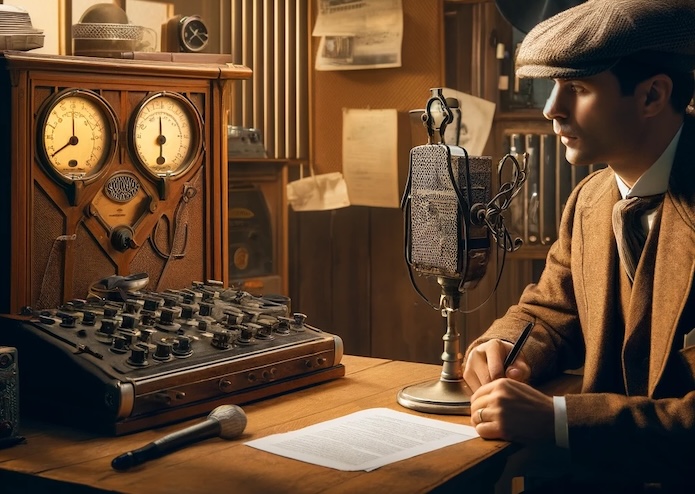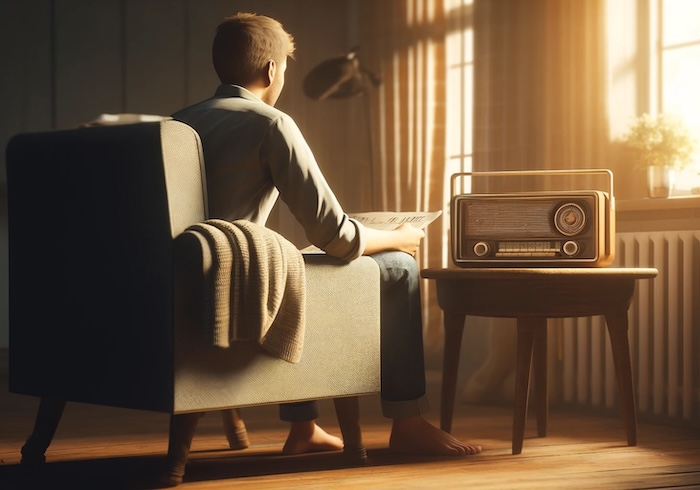The State of Radio Popularity In The 21st Century: Is It Still Going Strong?

Introduction
Radio, one of the oldest forms of mass communication, has survived to become an integral part of our daily lives for over a hundred years. Despite technological innovations taking place at a breakneck speed all around us and the proliferation of digital media, radio is one medium that is still viable and popular among millions of people all across the globe. This paper looks into the state of radio during the new millennium, taking into account its history, its popularity, the audience it caters to, the peculiar characteristics it possesses, and its future potential.
The Beginning and Development of the Radio
The Birth of Radio
Radio broadcasting started in the early 20th century, and the first radio transmission that took place in 1895 is considered to have been made by Guglielmo Marconi. With this radical technology, information could be transmitted across long distances without the use of wires. The early part of the 1920s marked the emergence of commercial radio broadcasting, with stations such as KDKA in Pittsburgh, USA, beginning to make programmatic transmissions to their respective listener audiences. Radio gradually gained a reputation as a popular means of transmitting information, entertainment, and music, which defined the cultural tone of the 20th century.
The Golden Age of Radio
Known as the “Golden Age of Radio,” the era from the 1920s to the 1950s was when radio served as the primary source of entertainment and storytelling for most households. Comedies, dramas, variety shows, live performances of music, and more were some of the popular programs broadcast during that era. Radio played a prominent role in spreading news during important events such as World War II, providing instant news updates. It psychologically connected people and made them feel united during universal experiences.
The Rise of Television and the Digital Era
The introduction of television during the 1950s created a sea change in the world of media. The winds of change foretold the death of the radio as the public shifted their attention to the newly introduced visual media. However, radio overcame this by focusing on music, talk shows, and specialized content. The subsequent introduction of FM broadcasting during the 1960s and 1970s further increased the popularity of the radio, as better sound quality was now available to music enthusiasts.
There were new challenges with the dawn of the internet, new media like podcasts, and new streaming services in the burgeoning digital age, posing a threat to the very existence of radio as we know it. Nevertheless, radio exists to date and will always exist as long as technological innovation drives it and it evolves.
The Popularity of Radio in the 21st Century
How Radio is Listened To These Days
Radio is listened to through various means in the 21st century, such as traditional AM/FM radio sets, via the internet on streaming radio stations, satellite radio, and mobile applications. Most radio stations have also been digitalized using advancements such as live streaming and on-demand listening through internet radio and applications developed specifically for the radio stations. This adaptability has helped radio reach more listeners and stay relevant in the digital age.
The Perennial Popularity of Radio
Is Radio Still Popular? Well, let’s explore the reasons why radio remains popular:
Accessibility: Radio is easily accessible to anyone with a receiver, making it an affordable and easily accessible source of information and entertainment. One doesn’t require a subscription or internet access to listen to the radio, unlike other media, making it especially useful in areas with limited access to digital technology.
Variety of Content: There is also an immense range of content available on the radio. From music and talk shows to news and sports reporting, there is something for everyone—a wide spectrum of content that caters to varying tastes and interests.
Local Link: Local music, news, and events transmitted through radio can create a sense of community, binding individuals together and making them feel connected. Such services are not typically offered by most international or national media.
Companionship: Uniquely, radio has the ability to create a sense of intimacy and closeness between the radio speaker and the listeners. The feeling of a personal relationship that radio induces in listeners can be pleasurable and engaging, especially while traveling, on the move, or during solitary activities.

Who Are Listening to Radio?
The target audience for radio is quite diverse, including people of different ages, social statuses, and interests. However, certain categories of the population tend to listen to the radio regularly:
Commuters: Many individuals download digital radio onto their portable gadgets to listen to while driving to and from work, making it a perfect way to catch up on issues and be entertained during their commute.
Older Adults: While the younger generation has a higher population of digital media users, older adults still have a strong preference for traditional radio. To many of them, radio is a familiar medium they have lived with from the beginning.
Rural Populations: In rural areas with limited internet access, radio remains a major source of information and entertainment. Local broadcasting radio stations are crucial for connecting rural areas and keeping people updated with global events.
Music Fans: Radio remains a popular medium for enjoying music and discovering new playlists. Many music enthusiasts appreciate the insights and depth of information provided by radio disc jockeys, who frequently introduce them to new bands and genres.
Characteristics Unique to Radio
Real-Time Data: One of radio’s key advantages is its ability to provide timely information. Radio stations that broadcast news can deliver on-the-spot breaking news, weather reports, and emergency broadcasts promptly. This timely delivery of information is crucial during natural disasters or other emergencies when other forms of communication may be unavailable.
Human Relationship: Radio excels at developing a direct, one-on-one relationship between the presenter and the listener. Most radio show presenters build an audience that tunes in daily to hear familiar voices and interesting personalities. This human connection cannot be replicated by other media, making radio a warm and engaging medium.
Curated Content: Radio content is carefully selected to match the interests and preferences of its listeners. Whether it’s a finely curated music playlist, a talk show around a common theme, or a news bulletin, radio content is handpicked by industry experts and professionals. This ensures that listeners receive quality content that is relevant and engaging.
Local Focus: Many radio stations focus on local music, news, and events, giving the audience a sense of belonging and community. This local touch is something that international and national media cannot provide, making radio an important source of local entertainment and news.
Will Radio Be Obsolete in the Future?
Issues Facing Radio
Despite its continued popularity, radio faces significant challenges in the 21st century. The prominence of digital media, podcasts, and streaming services has altered content consumption behaviors, leading some to question the future of radio. Additionally, as internet access and mobile devices become more prevalent, people can access a wide range of pre-recorded or on-demand content more easily.
Creativity and Adaptation
For radio to remain relevant, it must constantly evolve and reinvent itself. Many radio stations now have an online presence, allowing live streaming from their websites or apps. Through these platforms, listeners can access podcasts and on-demand material. This adaptability allows radio to reach a wider audience and stay competitive with other forms of media.
The Lasting Appeal of Radio
Radio will always have a charm that has endured over the years. Its accessibility, the diversity and richness of its programming, its local relevance, and its ability to offer a personal touch make it an extraordinary and worthwhile medium. As long as radio continues to evolve and innovate, it will remain a popular and valuable communications medium for many years to come.
Conclusion
Radio’s popularity in the 21st century remains vibrant and healthy. While the media landscape has changed significantly with the advancement of digital technology, radio has adapted to the new environment and remained viable and relevant. Its accessibility, wide range of programs, local coverage, and personalization make it distinctive and relatable. The future of radio depends on its ability to continue evolving and adopting new technologies. As long as radio stations are creative and cater to their audiences’ needs, radio will remain a popular and relevant medium of communication for years to come. Radio’s enduring popularity is due to its ability to provide real-time information, curated programming, and a personal touch that other media cannot match. In a digitally focused, on-demand world, radio’s charismatic and spontaneous personality offers a unique appeal.